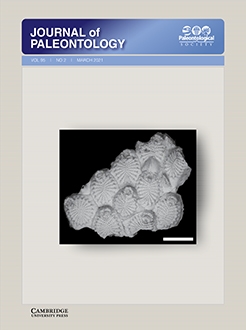Twelve specimens of EumorphocystisBranson and Peck, 1940 provide the basis for new findings and a more informed assessment of whether this blastozoan (a group including eocrinoids, blastoids, diploporites, rhombiferans) constitutes the sister taxon to crinoids, as has been recently proposed. Both Eumorphocystis and earliest-known crinoid feeding appendages express longitudinal canals, a demonstrable trait exclusive to these taxa. However, the specimen series studied here shows that Eumorphocystis canals constrict proximally and travel within ambulacrals above the thecal cavity. This relationship is congruent with a documented blastozoan pattern but very unlike earliest crinoid topology. Earliest crinoid arm cavities lie fully beneath floor plates; these expand and merge directly with the main thecal coelomic cavity at thecal shoulders. Other associated anatomical features echo this contrasting comparison. Feeding appendages of Eumorphocystis lack two-tiered cover plates, podial basins/pores, and lateral arm plating, all features of earliest crinoid ‘true arms.’ Eumorphocystis feeding appendages are buttressed by solid block-like plates added during ontogeny at a generative zone below floor plates, a pattern with no known parallel among crinoids. Eumorphocystis feeding appendages express brachioles, erect extensions of floor plates, also unknown among crinoids. These several distinctions point to nonhomology of most feeding appendage anatomy, including longitudinal canals, removing Eumorphocystis and other blastozoans from exclusive relationship with crinoids. Eumorphocystis further differs from crinoids in that thecal plates express diplopores, respiratory structures not present among crinoids, but ubiquitous among certain groups of blastozoans. Phylogenetic analysis places Eumorphocystis as a crownward blastozoan, far removed from crinoids.
How to translate text using browser tools
17 March 2021
Evolutionary significance of the blastozoan Eumorphocystis and its pseudo-arms
Thomas E. Guensburg,
James Sprinkle,
Rich Mooi,
Bertrand Lefebvre
ACCESS THE FULL ARTICLE

Journal of Paleontology
Vol. 95 • No. 2
March 2021
Vol. 95 • No. 2
March 2021





